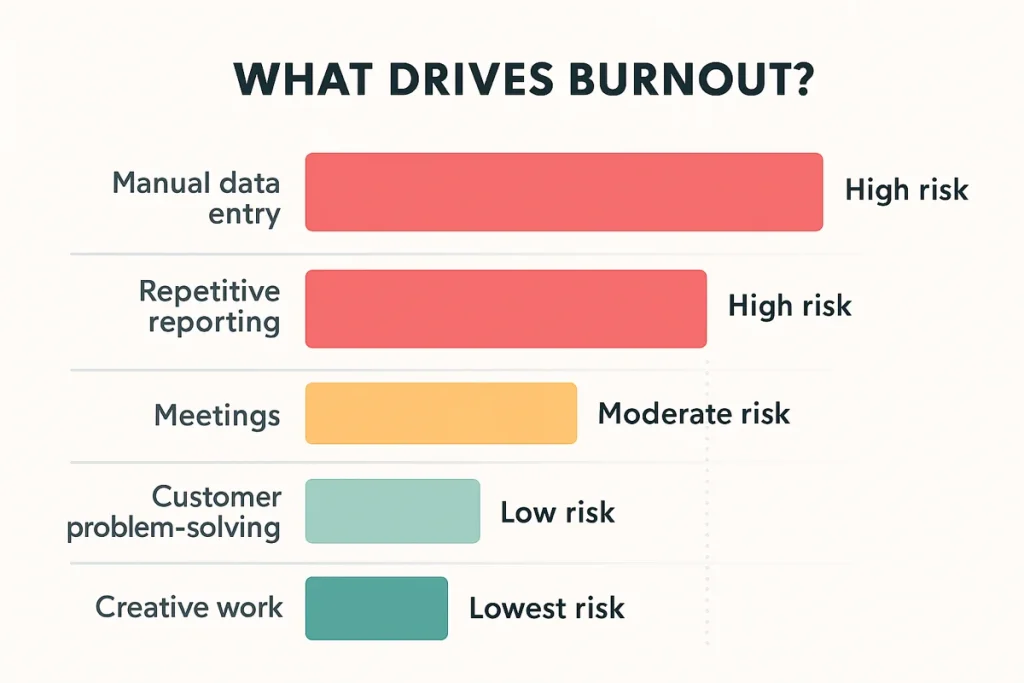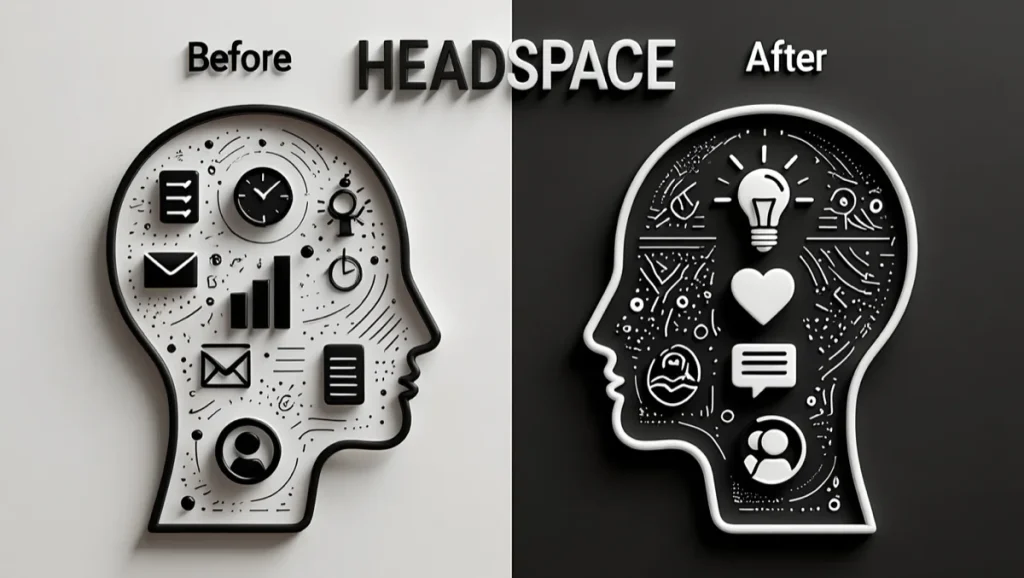Losing a valuable employee is more than a headache. It’s expensive, disruptive, and often avoidable.
According to the Society for Human Resource Management, the cost of replacing a single employee can range from 50% to 200% of their annual salary. That doesn’t include the impact on customer service, internal morale, or momentum on key projects.
So, why do good people walk away? In many cases, it’s not about the paycheck. It’s about the work itself, especially when that work feels mindless, repetitive, or disconnected from their actual role.
Burnout Isn’t Just About Working Too Much

We often think burnout comes from long hours or high pressure. But research suggests the real problem is a lack of meaningful work. Employees who spend more than 20% of their time on low or non-value tasks are far more likely to report burnout symptoms, even in low-stress environments.
For many small and mid-sized businesses, these tasks are easy to spot:
- Manual data entry across disconnected systems
- Copying and pasting numbers into spreadsheets or reports
- Chasing approvals or confirming routine details
- Toggling between email, CRM, calendar, and task trackers
These chores aren’t just inefficient. They are demoralizing. Your most capable people didn’t sign up to be human middleware.
Automation Isn’t About Headcount. It’s About Headspace.

Modern automation can make a real difference.
We’re not talking about replacing staff or handing everything over to robots. We’re talking about supporting your team by removing the digital grunt work that clogs their day and contributes nothing to your bottom line.
Think about:
- AI-powered data syncing that eliminates duplicate entry across apps
- Automated report generation that pulls real-time data from your systems
- Smart inbox tools that flag high-priority items and schedule follow-ups automatically
- Self-service workflows for time-off requests, quote approvals, or status updates
These kinds of tools do not replace jobs. They remove the drag from them. They give your people time to focus on the parts of their role that require judgment, creativity, and human connection.
Want to find out what’s draining your team’s energy? Let’s talk about it →
Your Best People Want to Do Their Best Work

When skilled employees are stuck doing low-skill tasks, they disengage. A McKinsey report on attrition noted that one of the top drivers for employee turnover was “lack of meaningful work” and “not feeling valued for contributions.”
By contrast, employees who feel they can apply their strengths and grow professionally are more likely to stay, even in competitive job markets.
Automation helps make this possible by:
- Reducing after-hours catch-up on admin work
- Preventing time-wasting busywork from crowding out important projects
- Creating space for higher-level thinking, collaboration, and growth
It’s not just about retention. It’s about making work feel like it’s worth doing.
Better Tools, Better Morale, Fewer Mistakes

When you take repetitive tasks off your team’s plate, you don’t just make them happier. You also make your business run smoother.
Here’s what improves through intelligent automation:
- Fewer human errors: Less manual handling means fewer costly mistakes
- Faster turnaround: No more waiting on a report or chasing a form
- More transparency: Tasks and statuses are logged automatically, not buried in someone’s inbox
The payoff is clear. You get fewer bottlenecks, more confident employees, and systems that don’t break when someone goes on vacation.
Keep the People Who Keep Your Business Running
Automation is not a shortcut. It is a strategy. If your best people are leaving or burning out, it’s worth asking whether the problem lies in the work itself.
The good news? You don’t need to be technical to fix this. You just need the right partner to help you identify where time and talent are being wasted.
Let’s identify the tasks your team shouldn’t be doing.
No pitch. No pressure.
Just a real conversation about what automation could do for your business.





